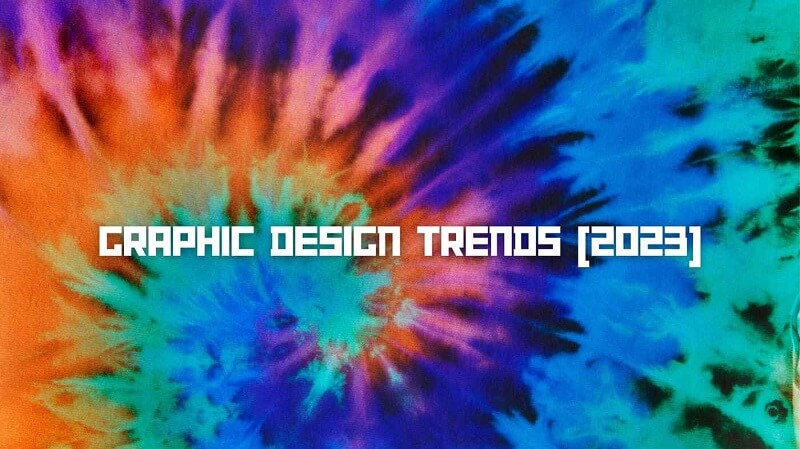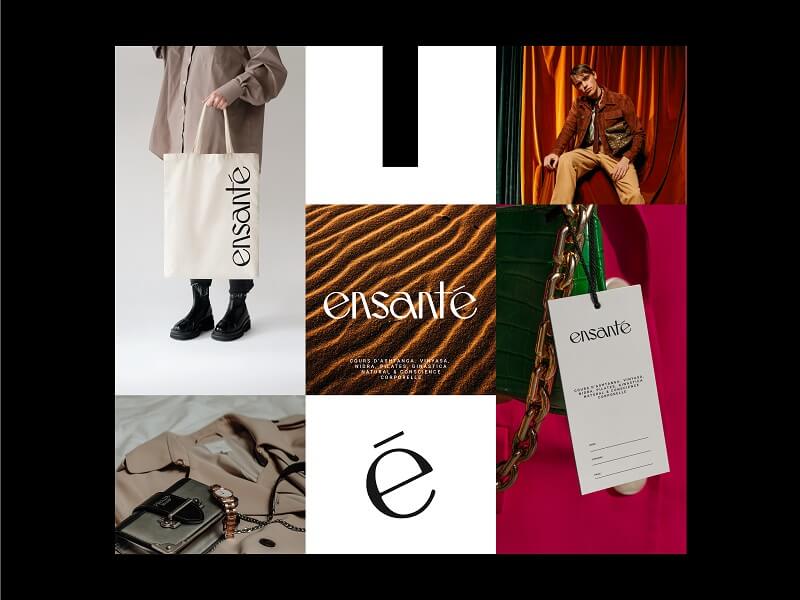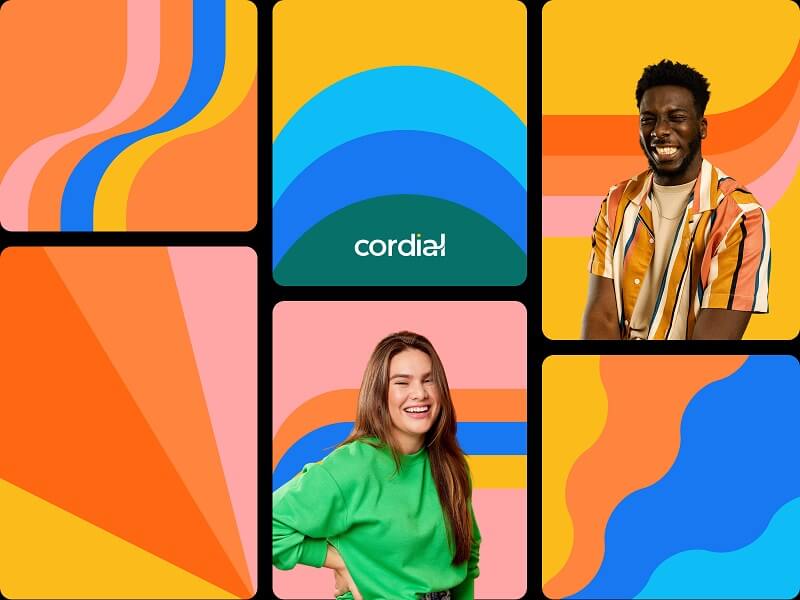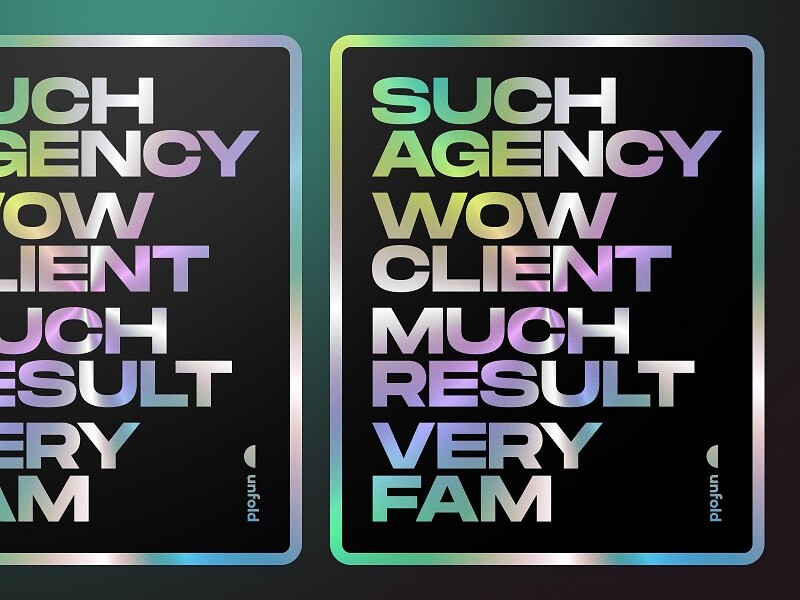
If you’re seeking graphic design tips and inspiration or want to stay on top of graphic design trends in 2024, there are various styles, tools, and techniques to explore. One of the top graphic design trends is bold and attention-grabbing typography. Designers use vintage fonts like Cooper Black, Neon 80s, and Broadway to create nostalgic yet modern designs. Another emerging trend in typography is abstract lettering, which incorporates unique shapes and textures to add depth and visual interest.
Abstract shapes and patterns are another popular graphic design trend; you can use them to create surreal and dreamlike designs with unexpected colour combinations, unusual shapes, and experimental compositions. Moreover, there is a growing interest in vintage and retro design, with the emergence of the minimal vintage design and symbol revival trend that involves incorporating old symbols with a modern twist.
In tools and applications, Adobe’s Creative Suite continues to be the industry standard for graphic design software. Programs such as Photoshop, Illustrator, and InDesign are essential for creating high-quality designs. Alternatively, newer tools like Figma and Sketch offer more streamlined and collaborative approaches to design, and 3D design tools like Blender, Maya, and Cinema 4D allow designers to create stunning 3D models and animations.
As graphic design is an ever-changing and evolving field, staying curious, open-minded, and experimenting with new techniques and approaches can help you create designs that stand out in a crowded marketplace. Whether you’re a professional designer or just starting, keeping up with the latest trends and tools can help you effectively communicate your message to your intended audience.
These are examples of graphic design tools and applications, as well as how and where they might be used (for example, social media marketing posts, designs for products, book designs, and so on).
13 Top Graphic Design Trends:
![]()
1. 3D Design
3D design involves the creation of 3D objects and environments through specialized software. It can be used in product design, architecture, and animation, among other fields. To create 3D designs, designers use tools such as Blender, SketchUp, and AutoCAD. With 3D design, designers can create virtual prototypes, elaborate architectural models, characters, environments, and special effects for animation. Using these tools, designers can achieve intricate and lifelike designs that offer novel possibilities in their respective fields. The 3D design is a flexible and versatile trend with broad applications, and staying up-to-date with the latest tools and techniques is essential for success.

2. 80s Fonts
The 80s font trend has a comeback in modern design, featuring bold and playful fonts that were popular in the 1980s. Designers can add a fun and nostalgic touch to their product designs, book designs, and posters by using 80s fonts. Adobe Illustrator, Canva, and Fontstruct are tools that can help designers achieve this trend. Similarly, the 90s Space Psychedelia trend draws inspiration from the psychedelic and space-themed designs of the 1990s, characterized by bold colours, trippy patterns, and futuristic imagery. This graphic design trend is popular in music album covers and posters, product designs, book designs, and social media marketing posts. Adobe Photoshop, Procreate, and Blender are tools that can help designers achieve this trend. Alternatively, you can apply a vintage filter to your social media photos.
The Symbol Revival trend uses traditional and historical symbols in modern design to evoke a sense of nostalgia and cultural heritage. Branded illustrations are custom-made graphics that appear for a brand or product and are used in advertising campaigns, social media marketing posts, and website design to create a unique visual identity. One example is the graphic design work of Mailchimp, which is playful, colourful, and distinctive and used throughout its website, social media accounts, and marketing campaigns.

3. 90s Space Psychedelia
90s Space Psychedelia is a design trend that draws inspiration from the art and aesthetics of the 1990s. Bright neon colours, retro-futuristic imagery, and space themes characterize it. It is used in various types of design, such as social media marketing posts, product designs, and book designs. To achieve 90s psychedelic designs, designers can use Adobe Photoshop or Procreate. In product design, in the 90s space, psychedelia can create unique and modern packaging designs, product labels, or user interfaces. For book designs, it can produce dynamic and visually stunning covers that capture the essence of the story or theme. Overall, 90s Space Psychedelia offers a bold and vibrant design solution that can be adapted to a variety of design projects.

4. Symbol Revival
A graphic design trend, Symbol Revival, involves incorporating classic symbols and iconography into modern designs. This trend is used in various design fields, including social media marketing, product design, and book design. Adobe Illustrator and Sketch are popular tools for achieving symbol revival designs. In product design, symbol revival can create distinctive packaging, product labels, or user interfaces. In book designs, it can create dynamic chapter dividers and other design elements. Symbol Revival offers a versatile and creative design solution for different types of projects.

5. Minimal Vintage
Minimal vintage is a design trend that combines modern simplicity with vintage aesthetics. It features minimalist design elements, muted colour palettes, and also retro-inspired typography. You can use minimal vintage in social media marketing posts, product designs, and book designs. To achieve this style, designers can use Adobe Photoshop or Figma. In product design, Minimal Vintage can create elegant and timeless packaging designs, product labels, or user interfaces. Book designs can produce classic and refined covers that evoke nostalgia. Designers can adapt Minimal vintage as a stylish and sophisticated design solution to a variety of design projects.

6. Branded Illustrations
Custom illustrations are a design trend that enhances a brand’s identity and messaging. Designers use it in various types of design, such as social media marketing posts, product designs, and book designs. Designers can use Adobe Illustrator or Procreate to create branded illustration designs. In product design, Branded illustrations create distinctive and memorable packaging designs, product labels, or user interfaces. For book designs, Branded illustrations produce charming and visually appealing illustrations that capture the essence of the story or theme. With the help of design tools and software, achieving these designs is now more accessible than ever.

7. Seamless Surrealism
Seamless Surrealism is a graphic design trend that combines multiple elements and images to create a dreamlike and surreal composition. Different types of design can be utilized, such as social media marketing posts, product designs, and book designs. Designers can use Adobe Photoshop or Canva to achieve this in their designs. In product design, it can create dynamic and visually appealing packaging designs, product labels, or user interfaces. For book design, it can produce stunning and immersive cover designs. Overall, seamless offers a captivating and unconventional design solution. It can be adapted to different design projects.

8. Authentic Representation
Authentic representation is a trend that emphasizes diversity, inclusivity, and genuine human experiences in design. It focuses on using realistic and relatable visuals to create an emotional connection with the audience. You can use this in advertising campaigns, website design, and social media posts. One example of authentic representation is the “This Girl Can” campaign by Sport England. The campaign features images and videos of real women engaging in physical activity, showing the diversity of body types, ages, and abilities.

9. Foil Printing
This technique has been used in graphic design for decades to add a touch of elegance and luxury to printed materials such as business cards, invitations, and packaging. In 2023, foil printing is expected to continue to be a popular trend in graphic design. With the rise of e-commerce and online marketing, printed materials are becoming more important than ever in creating a memorable brand experience. Moreover, Foil printing is a great way to make a design stand out from the competition and create a lasting impression on customers. In addition to traditional gold and silver foils, designers are experimenting with a wide range of colours and textures to create unique and eye-catching designs.
Holographic foils, for example, can add a futuristic and dynamic feel to a design, while matte foils can create a subtle and sophisticated look. Combining foil printing with techniques such as embossing and debossing can enhance the depth and texture of a design. By using foil printing to create a tactile and visually appealing design, graphic designers can help their clients stand out in a crowded market and create a lasting impression on their customers.

10. Mixed Dimension
Mixed-dimension design is a trend that combines 2D and 3D elements to create a unique and immersive visual experience. It often involves using digital tools to add depth, texture, and perspective to flat designs. Companies apply this to website design, product packaging, and social media posts. One example of mixed-dimension design is the album art for the musician Bonobo’s album “Migration.” The artwork combines 2D illustrations with 3D elements to create a surreal and intricate landscape.

11. Experimental Escapism
Experimental escapism is a trend that emerged in the creative industry as a response to the global pandemic and the challenges it posed to people’s mental and emotional well-being. This graphic design trend aims to provide a temporary escape from the uncertainties and anxieties of daily life by exploring uncharted territories and experimenting with new forms of creative expression. Experimental escapism encourages designers to push the boundaries of traditional design practices and create bold, unconventional designs that challenge the status quo. This trend emphasizes the use of vibrant colours, bold typography, and experimental compositions to create designs that are visually striking and emotionally engaging.
One example of experimental escapism in graphic design is the use of abstract shapes and gradients. Designers are exploring new ways of using gradients to create surreal and dreamlike designs that transport the viewer to another dimension. These designs often feature unexpected colour combinations and experimental compositions that challenge our perception of reality. Another example of experimental escapism in design is the use of playful illustrations and animations. Designers are using animation to create immersive experiences that captivate the viewer’s attention and provide a sense of escape from the real world. Besides this, these animations often feature whimsical characters and dreamlike landscapes that evoke a sense of wonder and curiosity.
Overall, experimental escapism is a trend that encourages designers to embrace their creativity and explore new forms of expression. By experimenting with new techniques and pushing the boundaries of traditional design practices, designers can create designs that provide joy and wonder to viewers.

12. Complex Compositions
Complex compositions refer to intricate and multi-layered designs that create a sense of depth, movement, and complexity. Designers use this design style in poster design, book covers, and also album art. David McLeod is an example of a graphic designer who creates mesmerizing designs featuring dynamic and abstract shapes arranged in intricate patterns.
Symbol Revival is a trend that features motifs such as ancient runes, Egyptian hieroglyphs, or tribal designs. It can be applied to branding, product designs, book designs, and social media marketing posts. Designers can use software tools like Adobe Illustrator, Canva, and Sketch to create complex symbols and motifs characteristic of this trend.
Moreover, the minimal vintage design combines the simplicity and elegance of minimalism with vintage aesthetics. Also, it involves using a limited colour palette, simple typography, and vintage-inspired graphics to create a clean and timeless look. Besides this, Real McCoy’s, a Japanese fashion brand, is a great example of minimalist vintage design. This design style can be applied to social media marketing posts, product designs, book designs, and more, using software tools such as Adobe Photoshop, Illustrator, and InDesign, along with platforms like Canva and Unsplash.

13. Abstract Gradients
Abstract gradients are a popular trend in graphic design, providing a modern way to incorporate colour into designs. Many designers use abstract gradients in various types of work, such as website design, social media graphics, and product packaging.
Adobe Photoshop and Adobe Illustrator are two tools that can help designers create custom gradients. The gradient tool in Photoshop allows designers to blend colours seamlessly and create eye-catching designs. Illustrator offers a wide range of gradient options, including mesh gradients, which can create complex shapes and textures. Canva and Figma are other graphic design tools that offer unique features for creating abstract gradients.
Designers use abstract gradients to create dynamic website backgrounds, social media graphics, and modern product packaging designs. They can also add depth and dimensionality and convey emotions and a brand’s personality through colour.
Conclusion: Top Graphic Design Trends
Graphic design is an ever-evolving and dynamic field, with new and innovative trends emerging every year. In 2023, several design trends gained significant traction in the industry, including 80s fonts, 90s space psychedelia, symbol revival, minimal vintage, branded illustrations, seamless Surrealism, and also authentic representation. 80s fonts are bold, bright, and have a retro feel that adds a touch of nostalgia to designs. Symbol Revival involves bringing back old symbols and giving them a contemporary twist, while Minimal Vintage combines the simplicity of minimalism with the classic charm of vintage design. Branded illustrations are an effective way of promoting a brand or product using unique and creative graphics. Seamless Surrealism blends different design elements to create a dreamlike and surreal effect that catches the audience’s attention.
To produce attractive and innovative designs, graphic designers should keep themselves informed about the latest design trends and tools, including Adobe Photoshop, Illustrator, InDesign, Figma, Sketch, Canva, Blender, Maya, and also Cinema 4D.
Short Bio:
Jenn Pereira has extensive experience in understanding user experience and devising efficient strategies for producing content that meets users’ requirements and expectations. She is currently employed as a Content Strategist at Kittl.com, an intuitive design platform with tools such as AI image and logo generator, t-shirt maker, and more.

